The Best Of CES 2019: Highlights And Top Products

CES 2019: Exciting, Intriguing And Sometimes Bewildering
Self-driving car toys. Connected kettlebells. Warring semiconductor companies. CES 2019 was undoubtedly full of exciting, intriguing and sometimes bewildering products and technologies— some of which will likely become common at home and work while others get left behind.
After looking at dozens of wearables, smart home devices, PCs, computer components and accessors, robots, toys and smartphones, CRN has rounded up the best products and technologies that CES 2019 had to offer.
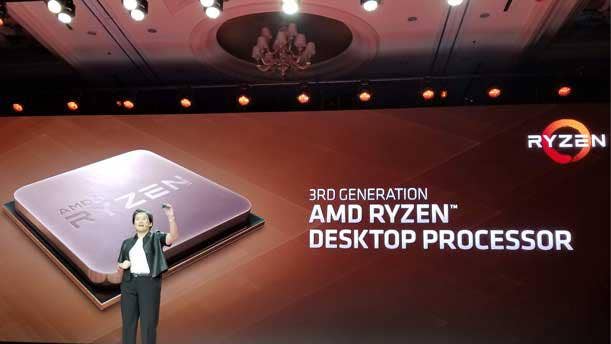
AMD Third-Generation 7nm Ryzen
AMD stole the show when CEO Lisa Su revealed the company's much-anticipated 7-nanometer client CPU, the third-generation Ryzen, during her Wednesday keynote. Su made it clear that the company is looking to challenge Intel's dominance in high-end PC gaming with the upcoming Ryzen. Like Intel's top gaming CPU, the Core i9-9900K, AMD's next flagship processor will come with eight cores and 16 threads. But during a live demonstration, Su showed that the third-generation Ryzen scored a higher benchmark test than the i9-9900K while using 30 percent less power.
Su said the third-generation Ryzen will launch in mid-2019, meaning that AMD will beat Intel in releasing its next-generation CPU by several months. The aggressive performance and launch plans for the processor, which will support PCIe 4.0, means that Intel will face fiercer competition from AMD than ever before.
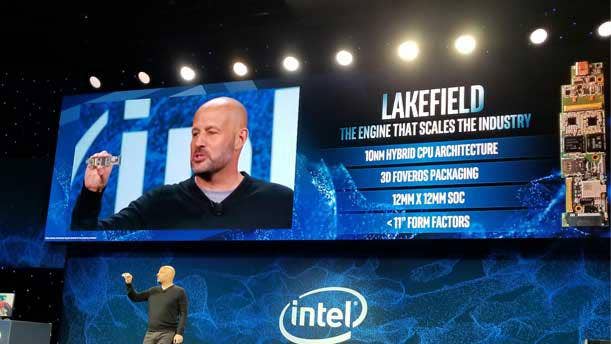
Intel Lakefield
While AMD is set to beat Intel to the market with a next-generation CPU this year, Intel is working on shaking up the way we think about CPUs with a new hybrid architecture called Lakefield. Revealed during Intel's press conference Monday, Lakefield is based on the company's new Foveros 3-D stacking technology, which evolves chips from a monolithic integrated circuit design to multi-layer chips that stack logic chips on top of each other.
Gregory Bryant, head of Intel's Client Computing Group, said Lakefield will include a 10-nanometer Sunny Cove core for high performance and four Atom-based cores for power efficiency. He said the nature of Lakefield's 3-D chip design will give OEM partners the ability to design thinner and lighter form factors that provide long battery life, performance and connectivity—including designs that are smaller than 11 inches.
Lakefield-based systems will launch later this year.

JaxJox Kettlebell Connect
JaxJox's Kettlebell Connect is a smart kettlebell whose weight can be automatically adjusted from 12 pounds to 42 pounds in six-pound increments without the need to remove or add parts. The device comes with motion sensors, a gyroscope and accelerometer, enabling it to send weight-lifting data to the JaxJox app via Bluetooth.
The app in turn records things like reps, sets and rest time, which can then be combined with data from JaxJox's smart scale and heart rate monitor, as well as third-party devices like Fitbit and Apple Watch, to provide a personal fitness score. For a monthly $30 subscription fee, the app provides live and on-demand fitness classes. The product will cost $349.
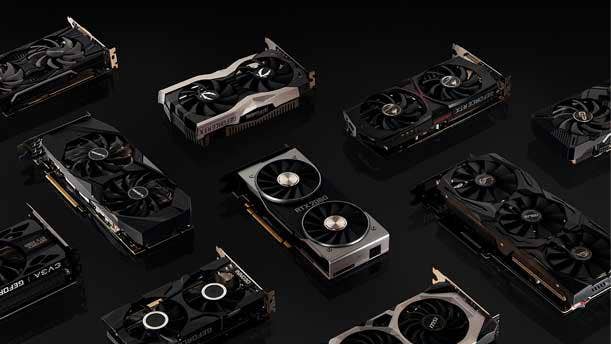
Nvidia GeForce 2060 RTX
AMD is releasing the world's first 7-nanometer GPU in February, but Nvidia has its own advantages in the graphics market thanks to a lineup of advanced GPUs that now includes the budget-friendly GeForce 2060 RTX. Priced at $349, the RTX 2060 features artificial intelligence and ray-tracing capabilities that are found in Nvidia's more expensive consumer GPUs based on its latest Turing graphics architecture. With ray tracing, the RTX 2060 enables cinematic-quality graphics with realistic lighting and reflections in real time.
Nvidia's latest GPU, which comes out Jan. 15, comes with 6 GB of GDDR6 memory and 240 Tensor cores, providing 60 percent faster performance than the previous generation GeForce GTX 1060 and delivering 52 teraflops of deep learning computing power.
With four options now available in Nvidia's GeForce RTX lineup and its unique ray-tracing features, the company will provide some tough competition for AMD's upcoming GPU.

Pivo
As artificial intelligence-powered cameras begin to show up everywhere, Pivo is offering its own unique spin on the device category with an accessory that gives smartphones cool new camera features for content creators. Pivo comes with a smart interactive pod that houses the smartphone, allowing it to automatically rotate 360 degrees to track faces and objects, among other advanced features.
The advanced features are made possible by Pivo's smart camera app, which comes with a total of more than 12 shooting modes. On top of object- and face-tracking, the app can also let users take selfies with the snap of a finger and create smooth panoramas and timelapse videos. The smart pod, which supports expansions for a GoPro mount and lightbox, is available to preorder on Indiegogo for $79. The retail price will be $139.

SimCam
The SimCam is being pitched as the first on-device artificial intelligence camera for the smart home security market. That means that instead of sending video information to cloud servers for facial recognition and motion detection, those capabilities are processed locally inside the device itself, thanks to its use of the Intel Movidius Myriad 2 visual processing unit. As a result, the SimCam comes with no recurring subscription costs.
The SimCam can integrate with other smart home devices, including Google Assistant and Amazon Alexa products. The device also allows customers to create their own AI detection applications, which can automate other aspects of the smart home.
The AI camera is available for preorder on Kickstarter in late January for a limited-time price of $99 (retail price $149). The device is expected to ship in February.

Snips Commands
Riding on the massive wave of voice assistants coming into the home and workplace, Snips Commands is enabling voice commands in connected devices without the need for an internet connection. Snips Commands is offered as a low-cost solution that runs on microcontroller unit devices, with support for up to 30 commands. Because of its offline nature, the software provides a low-latency, responsive voice interface.
The software solution can be customized to fit the needs of individual devices and comes with the ability to support sequential commands, allowing for more sophisticated interaction. With support for 66 languages and dialects, Snips Commands is now available to OEMs and systems integrators at a flat fee per device.

Soma Innofit
Intimates retailer Soma is offering a unique spin on the Internet of Things with a wearable product that solves a big problem for bra shoppers: finding the right fit and size. Called the Soma Innofit, the product is a wearable bra fit technology that takes accurate breast measurements in a matter of seconds. The results are instantly sent to the Soma Innofit app, which then provides recommendations for the best-fitting bras in Soma's online catalog.
The company plans to roll out the Soma Innofit to all of its retail stores to improve the bra fitting experience. The wearable is now available to order for a discount price of $25, and its final retail price will be $59.

Whill Autonomous Drive System
Aiming to improve last-mile transportation in the accessibility market, Whill has developed an autonomous personal electric vehicle that will be offered as a Mobility as a Service for businesses looking to improve their mobility options. The four-wheeled system comes with front- and rear-facing cameras, allowing it to navigate spaces automatically.
Whill is running pilots for its Autonomous Drive System with LaGuardia, Schipol and Heathrow airports this year. Target locations for its Mobility-as-a-Service offering also include malls, hospitals, museums, sidewalks and theme parks.

Zumi
Zumi is a self-driving car toy that aims to teach users how artificial intelligence and autonomous driving works. The small device Is fully programmable and can be taught to learn optimal driving routes, identify and avoid objects, and recognize gestures and faces.
For beginners, Zumi provides a visual, drag-and-drop programming interface. But more advanced users can write their own code with Tensor Flo and OpenCV and even use neural networks to train Zumi to identify certain patterns.
Zumi is available for preorder on Kickstarter for $119 (retail price $180).

HTC Vive Pro Eye
While virtual reality is a big theme at CES every year, HTC used CES 2019 to take VR up a few notches with the unveiling of the Vive Pro Eye headset. The headset integrates technology for tracking eye movements, which enables VR apps to be much more responsive—for instance, allowing users to control an app or game with their gaze (no controller necessary). That represents a potentially major step toward easier use of VR and could be pivotal in helping it to become more mainstream and attract more applications. Side benefit: Eye-tracking also lets the Vive use its computing resources more efficiently by only rendering images in high quality that users are actually looking at. Meanwhile, enterprise uses for the Vive platform are growing—with demonstrations at CES of applications from the likes of Fidelity Investments and Lockheed Martin.
The HTC Vive Pro Eye will be available in the second quarter. Pricing has not been disclosed.
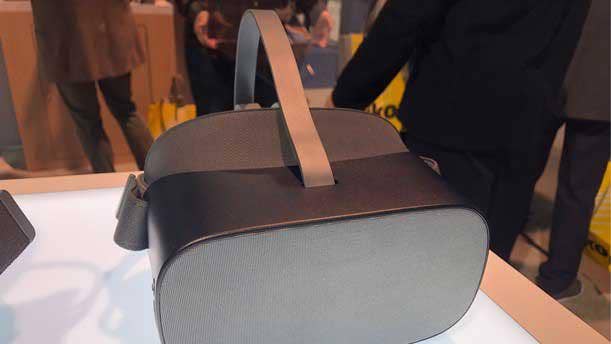
Pico G2 4K
VR specialist Pico also used CES 2019 to debut a new headset, which is even more squarely focused on business usage than the Vive. The Pico G2 4K stands out with 4K display resolution, up from 3K on previous Pico headsets. That resolution aims to solve the issue of VR displays not being clear enough for many users, according to Pico—and indeed, the display looked stunning during our demo of the headset at CES. We viewed a video of a beetle up close, and the display rendered the most detail we've ever seen in a VR headset by far. The Pico G2 4K is also impressive for being a stand-alone headset, meaning it's wire-free, thus solving one of the other major limitations of many other VR devices.
Pico reports it has clients in industries including health care and education, and applications that can cut across sectors include workplace training. At CES, the company also showed off how the Pico headset can be used to replace PowerPoint-based trainings with more-engaging VR training sessions at businesses.
The Pico G2 4K will be available in the first half of the year. Pricing has not been disclosed.
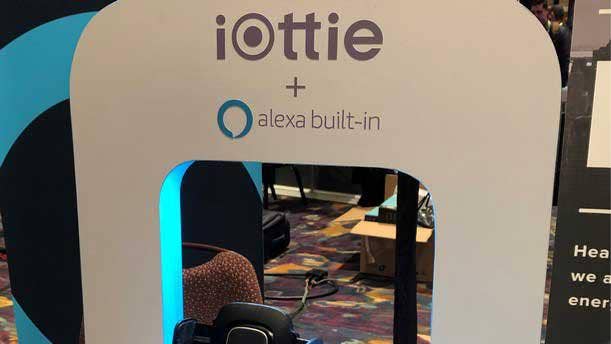
iOttie Easy One Touch Connect
If there's one place where we miss having Alexa the most, it's in the car. Voice control around the house is nice, but the car is where you really need Alexa to help control your apps (music and navigation apps come to mind). Accessory maker iOttie unveiled its solution to the issue at CES 2019: the Easy One Touch Connect, a smartphone mount featuring the Alexa assistant built in. The mount includes two microphones and noise canceling capabilities to reduce traffic noise, and accesses Alexa by connecting to the Alexa app on your smartphone. Ultimately, the Easy One Touch Connect could be real game-changer for anyone who spends a lot of time behind the wheel. As for the mount itself, it offers easy locking and releasing of your smartphone, and attaches to your dashboard or windshield using a suction cup.
The iOttie Easy One Touch Connect will be available in the first quarter for $65.
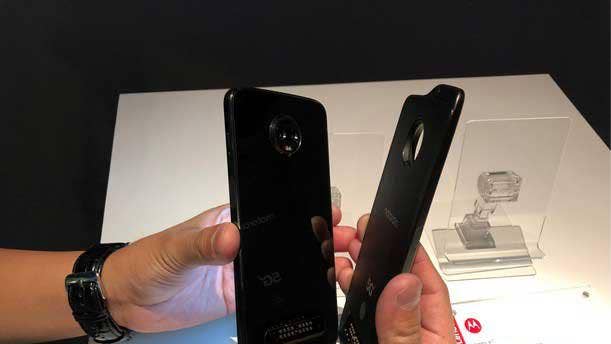
Motorola Moto Z3 With 5G Mod
While 5G seemed to be everywhere at CES 2019, there were few tangible announcements around the high-speed internet technology. One of those was the reveal for the first 5G-capable smartphone offered for Verizon's network, the Motorola Moto Z3—which will be able to connect to 5G by using a modular add-on. While the Moto Z3 is out now, the 5G Moto Mod is expected to debut this quarter. The mod, which snaps onto the back of the phone, includes Qualcomm's Snapdragon X50 5G modem and dedicated antennas for accessing Verizon's ultra wideband network. The mod also includes a 2,000 mAh battery to prevent battery drain from faster data speeds. As for the Moto Z3 itself, the 6-inch smartphone features an FHD+ Super AMOLED display, a 3,000 mAh battery and Qualcomm's Snapdragon 835 processor.
The Motorola Moto Z3 is priced at $480 from Verizon. Pricing for the 5G Moto Mod has not been disclosed.
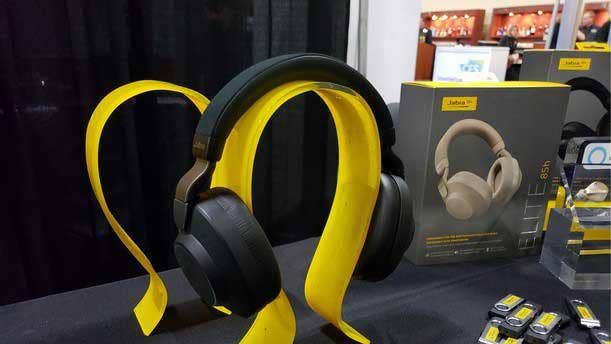
Jabra Elite 85h
Jabra used CES 2019 to unveil a pair of headphones that should stand out from the pack in a few ways. First, the Elite 85h offers Active Noise Cancellation (ANC) that is capable of adjusting depending on the specific noises of an environment. The headphones also offer very strong battery life—up to 32 hours of battery life on a charge—along with six microphones for improved calls. To top it off, the Elite 85h offers voice assistant control with Alexa (which is available when the headphones are paired with either iPhone or Android devices), or with Google Assistant or Siri (only available when paired with native devices). And, activating a voice assistant on the Elite 85h can be done using the standard wake word rather than the common headphones method of pressing a button.
The Jabra Elite 85h will be available in April for $299.
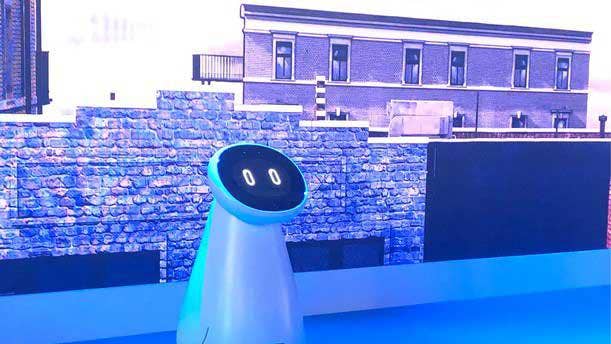
Samsung Robots
While we didn't get anything from Samsung about its foldable smartphone at CES 2019, we did get one surprise from the company: robots. Samsung disclosed that it's working on robots for home care (Samsung Bot Care), retail (Samsung Bot Retail) and air quality monitoring (Samsung Bot Air). The Samsung Bot Care robot (pictured) came out for a quick demo during Samsung's CES news conference, and the company showed how the robot can take vital signs such as blood pressure and heart rate by having an individual place his or her finger on a sensor on the robot. Other potential uses for Samsung Bot Care could include sleep monitoring, exercise guidance, music therapy and remote management for parents, Samsung said. While the company didn't disclose details on where the robots are at in terms of development—suggesting that commercial uses are a ways off—the announcement still marked a potential new area of focus for the electronics giant.

LG UltraWide Monitor
Wide-screen monitors for power users were one major theme at CES 2019—and LG debuted one of the widest. Aimed at enabling strong productivity, the UltraWide Monitor 49WL95 offers a 49-inch display that is curved and features a 32:9 aspect ratio. The monitor also offers sharp picture quality for its IPS screen, with resolution of 5,120 x 1,440—which LG notes is equal to putting two 27-inch QHD displays side by side. In addition, the monitor includes USB-C ports for data transfer and charging devices such as laptops.
Pricing and availability for the LG UltraWide Monitor 49WL95 has not been released.

HP EliteOne 800 G5 AIO
Among HP Inc.'s big moves at CES 2019 was to announce the expansion of its Sure View integrated privacy screen beyond the notebook. The company unveiled the EliteOne 800 G5 as the first all-in-one PC with Sure View, a display technology that enhances privacy by reducing almost all visible light when the screen is viewed at an angle. On the EliteOne 800 G5, Sure View can be turned on by pressing a button located underneath the screen. HP says it's seen demand for the privacy screen not just for notebook users who are in public places, but also for helping to keep sensitive work private in offices. The 23.8-inch display will be available with or without Sure View, and will also be offered as an optional touch screen. The AIO features slim bezels around the display and FHD (1,920 x 1,080) resolution, and a pop-up webcam for added privacy. Available options for the EliteOne 800 G5 AIO include up to 64 GB of RAM, Intel Optane memory, SSD storage and AMD Radeon RX 560 graphics.
The HP EliteOne 800 G5 AIO will be available in July. Pricing has not been disclosed.

Dell Latitude 7400 2-in-1
At CES 2019, Dell signaled where it's heading next in its Latitude business notebook line: metallic bodies, slim display bezels and stunning battery life. Those are among the key advancements in the newly announced Latitude 7400 2-in-1, a convertible that ditches the usual black carbon-fiber body for brushed aluminum. The screen on the Latitude 7400 2-in-1 has narrow bezels on all four sides for a nearly "edge to edge" display. That slim-bezel design goes a long way toward helping to reduce the overall size of the notebook, which Dell is touting as the smallest 14-inch 2-in-1 on the market by volume (and as 25 percent smaller than predecessor models). Dell's other biggest accolade for the Latitude 7400 2-in-1 is its battery life, which can reach up to 24 hours on a charge (with base-level specs and a 78 WHr battery). That gives the notebook the longest battery life for a 14-inch 2-in-1 right now, according to Dell.
Meanwhile, the Latitude 7400 2-in-1 offers an option for LTE connectivity, with speedy mobile broadband that the leverages the Qualcomm Snapdragon X20 LTE-A modem. The notebook also comes with a new feature called "ExpressSign-In," which detects when users are near and automatically wakes up the PC.
The Dell Latitude 7400 2-in-1 will be available in March for a starting price of $1,599.

Lenovo Smart Tab
Lenovo unveiled a new concept in its tablet line at CES 2019 with the introduction of the Lenovo Smart Tab, an Android tablet that features the Alexa voice assistant built in and comes with a presentation/charging dock included. That gives it the ability to serve the functions of both a typical tablet as well as that of display assistant devices such as the Amazon Echo Show. The Smart Tab features a 10.1-inch FHD display, Qualcomm Snapdragon 450 processor and Dolby Atmos speakers. The tablet comes in two different configurations—the entry-level Smart Tab M10 as well as the Smart Tab P10, which features a larger battery, more RAM, double the number of speakers and a glass design.
The Lenovo Smart Tab is available in January. The Smart Tab M10 is priced at $199.99, while the Smart Tab P10 is priced at $299.99.